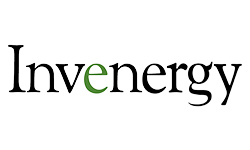Interest Rates: Fed allays market concerns over potential rate hike; is the 2% inflation goal still realistic?
Blaming an inflation environment that remains disconcertingly sticky, the Fed once again left its benchmark fed funds rate unchanged at 5.25% to 5.50% at its third meeting of 2024 in early May.
However, Fed Chairman Jerome Powell quelled some market fears by essentially eliminating any possibility that the FOMC could make an about-face and instead raise rates in 2024.
“The Fed confirmed what the market was expecting,” said Kiran Kini, CoBank senior vice president and treasurer. “The Fed remains cautious, given that inflation is not coming down as quickly as they thought. Some data points that came out after the meeting gave indications that inflation is easing. But the Fed’s stance remains that they want to wait and get confirmation that inflation data will allow them to gain confidence that it will eventually fall toward their 2% target before they decide if the timing is right to cut rates.
“But Chairman Powell fairly explicitly ruled out the possibility of a rate hike in the near term,” Kini continued. “The market was concerned that maybe conditions are such that the Fed may have more work to do to tighten policy to bring inflation down. But he went out of his way to rule out the possibility, making the point that financial conditions are restrictive and, if inflation doesn't come down, they'll just hold at current rate levels for longer.”
Still, Kini pointed to lingering market fears that the Fed may not be able to achieve its long-term goal of bringing inflation down to 2%.
“The market’s expectations have mostly converged with the views of the Fed for 2024,” Kini added. “But when you look further out, markets are less sanguine than the Fed that they'll be able to cut rates materially toward their long-term expectation of neutral policy rates. The Fed still thinks they can get rates to 2.5%, which is their long-term estimate of neutral. But it seems the market doesn’t share that view, and recent comments from Fed policy makers would indicate that their long-term expectation of neutral is starting to drift higher.”
Kini also noted that the Fed used the May meeting to confirm changes to its quantitative tightening program, which is intended to withdraw excess liquidity and allow the Fed to shrink its balance sheet.
“The Fed announced that it slowed down the pace of its balance sheet runoff, just like we had anticipated,” Kini concluded. “The Fed is getting down to around $40 billion a month in terms of balance sheet runoff, compared to $77 billion previously.”














